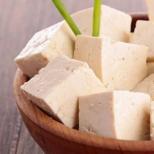The role of water in the life of the cell briefly. The role of water in the cell of the body. Participation in chemical reactions
It has long been established and well known that 40 - 98 percent of the cell mass is water. Water in the cell has the following role:
- maintaining cell elasticity. When the cell loses water, the leaves wither, the fruits dry out;
- ensuring the movement of substances: the entry of the main part of the substances into the cell and the removal of unnecessary elements from the cell in the form of solutions;
- chemical reactions are accelerated precisely due to the dissolution of substances in water;
- participation in many chemical reactions;
- ensuring the dissolution of a large number chemical substances(these include salts, sugar);
- participation in the process of thermoregulation with the help of the ability to slow cooling and slow heating.
The role of water in cell life
Water on the surface of our planet is perhaps the most common substance. And, oddly enough. It occupies the most important position in the cell in terms of volume. The greater the intensity of metabolism in any cell, the more water it contains.
In a cell, water occurs in two formations - free and bound. Free water - in intercellular spaces, vacuoles, vessels, organ cavities. It is necessary for the transfer of substances from the external environment into the cell and vice versa. Bound water - as part of some cell structures, is located between membranes, protein molecules, fibers, and has a connection with some proteins.
Functions of water in the cell: elasticity of the cell, preservation of volume, dissolution of various substances. Moreover, in vital systems, the main part of chem. reactions take place in water.
Water has many important properties, in its exclusivity, not inferior to any other substance.
Unique properties
Water has truly unique properties that are determined by the structure of its molecule. One water molecule contains an O atom, and two H atoms, bound to oxygen by polar covalent bonds. Due to the characteristic arrangement of electrons in this molecule, there is a special electrical asymmetry. The oxygen atom is more electronegative, and it attracts hydrogen atoms more strongly; because of this, the common pairs of electrons are shifted in the water molecule towards it.
Water is the ideal solvent
With the help of the polarity of molecules and the ability to create hydrogen bonds, water easily and quickly dissolves ionic compounds (acids, salts, bases). Very well soluble in water and non-ionic, but polar compounds. We are talking about compounds in the molecule of which there are polar (charged) groups, for example, sugars, amino acids and simple alcohols.
Everyone knows that water plays one of the most key roles in human life and that life on Earth is unthinkable without it. Getting to know the world and studying various sciences, people learn what is the biological role of water in the cell and how important water is for the functioning of any organisms.
Water (molecular formula H2O) is the most abundant substance on earth. It is found almost everywhere in varying amounts. For example, in tooth enamel it occupies 10%, but in the developing embryo it is more than 90%. The human body contains approximately 65% water. The tissues of young organisms are especially saturated with it.
So, the baby's body contains 70% fluid. There is even a hypothesis according to which the cause of aging is the inability of proteins in the body to bind large volumes of water. All human tissues and organs contain fluid. Even in the bones, its presence is approximately 20%, and in the brain, liver and muscles, this figure increases to 80%.
One of the main signs of life is metabolism. All types of metabolism - protein, carbohydrate, fat and others - also include water. Its essence lies in the process of absorption of fluid in the intestines and stomach, followed by its distribution in the tissues of the body and excretion with the help of the kidneys, skin and lungs.
Living tissues consist of cells and intercellular substances, which are a rather complex system, and some of their parts contain water. After all, it is an excellent solvent for most of the living substances that make up a living organism.
Thanks to it, during the water exchange, the process of thermoregulation occurs. Also, unnecessary and harmful products exchange.
From the foregoing, we can conclude what is the role of water in the cell:
- The elasticity of the cell is maintained. If the cell loses fluid, for example, the fruits may dry out or the leaves will wither.
- There is a movement of substances, including the removal of unnecessary elements.
- Chemical reactions are accelerated due to the dissolution of substances in a liquid.
- Dissolution of salts and sugars.
- Due to the ability of water to slowly heat up and cool down, it is involved in thermoregulation.
Free and bound water
The role of water in the life of the cell, perhaps, is difficult to overestimate. Moreover, with a greater metabolic rate, the amount of fluid increases. The water in the cell can be bound or free. The latter is contained in vacuoles, spaces between cells, cavities of various organs, vessels. It is necessary in order to transfer substances into the cell and out of it into the external environment.
Due to the fact that the electrons in this molecule are located unusually, there is a certain electrical asymmetry in it. Since oxygen is more electronegative, it attracts hydrogen more strongly.
Water as a solvent
Due to the polarity of the molecules, as well as their ability to create hydrogen bonds, water is a very good solvent for ionic compounds, such as salts or acids. Non-ionic (but polar) compounds also dissolve well in liquid. These include substances whose molecules contain charged (polar) groups, such as alcohols, sugars or amino acids.
Water (H 2 O) is the most important inorganic substance of the cell. In the cell, in quantitative terms, water ranks first among others. chemical compounds. Water performs various functions: maintaining the volume, elasticity of the cell, participating in all chemical reactions. All biochemical reactions take place in aqueous solutions. The higher the metabolic rate in a particular cell, the more water it contains.
Pay attention!
Water in the cell is in two forms: free and bound.
free water is located in intercellular spaces, vessels, vacuoles, organ cavities. It serves to transfer substances from the environment into the cell and vice versa.
bound water is part of some cellular structures, being between protein molecules, membranes, fibers and connected to some proteins.
Water has a number of properties that are extremely important for living organisms.
Water molecule structure
The unique properties of water are determined by the structure of its molecule.
Hydrogen bonds are formed between individual water molecules, which determine the physical and Chemical properties water.
The characteristic arrangement of electrons in a water molecule gives it an electrical asymmetry. The more electronegative oxygen atom attracts the electrons of hydrogen atoms more strongly, as a result, the water molecule is dipole(has polarity). Each of the two hydrogen atoms has a partially positive charge, while the oxygen atom carries a partially negative charge.
The partially negative charge of the oxygen atom of one water molecule is attracted by the partially positive hydrogen atoms of other molecules. Thus, each water molecule tends to connect hydrogen bond with four neighboring water molecules.
Water properties
Since water molecules are polar, water has the property of dissolving polar molecules of other substances.
Substances that are soluble in water are called hydrophilic(salts, sugars, simple alcohols, amino acids, inorganic acids). When a substance goes into solution, its molecules or ions can move more freely and, therefore, the reactivity of the substance increases.
Substances that are insoluble in water are called hydrophobic(fats, nucleic acids, some proteins). Such substances can form interfaces with water, on which many chemical reactions take place. Therefore, the fact that water does not dissolve some substances is also very important for living organisms.
Water has a high specific heat capacity, i.e. the ability to absorb thermal energy with a minimum increase in its own temperature. To break the numerous hydrogen bonds that exist between water molecules, it is required to absorb a large number of energy. This property of water ensures the maintenance of heat balance in the body. The high heat capacity of water protects the tissues of the body from a rapid and strong increase in temperature.
It takes a lot of energy to evaporate water. The use of a significant amount of energy to break hydrogen bonds during evaporation contributes to its cooling. This property of water protects the body from overheating.
Example:
Examples of this are transpiration in plants and sweating in animals.
Water also has a high thermal conductivity, ensuring an even distribution of heat throughout the body.
Pay attention!
High specific heat capacity and high thermal conductivity makes water an ideal liquid for maintaining the thermal balance of the cell and organism.
Water practically does not compress, creating turgor pressure, determining the volume and elasticity of cells and tissues.
Example:
The hydrostatic skeleton maintains shape in roundworms, jellyfish, and other organisms.
Due to the forces of adhesion of molecules, a film is created on the surface of water, which has such a characteristic as surface tension.
Example:
Due to the force of surface tension, capillary blood flow occurs, ascending and descending currents of solutions in plants.
Among the physiologically important properties of water is its ability to dissolve gases(O 2 , CO 2 etc.).
Water is also a source of oxygen and hydrogen released during photolysis into the light phase of photosynthesis.
Biological functions of water
- Water ensures the movement of substances in the cell and body, the absorption of substances and the excretion of metabolic products. In nature, water carries waste products to soils and water bodies.
- Water is an active participant in metabolic reactions.
- Water is involved in the formation of lubricating fluids and mucus, secrets and juices in the body (these fluids are found in the joints of vertebrates, in pleural cavity, in the pericardial sac).
- Water is part of the mucus, which facilitate the movement of substances through the intestines, create a humid environment on the mucous membranes respiratory tract. The secrets secreted by some glands and organs also have a water base: saliva, tears, bile, sperm, etc.
Water and its role in cell life
1. What structure does water?
2. What is the amount of water (in%) contained in different cells?
3. What is the role of water in living organisms?
The role of water in the cell.
Water is one of the most common substances on our planet. In the cell, in quantitative terms, it also ranks first among other chemical compounds. The higher the intensity metabolism in a given cell, the more water it contains.
Water in the cell is in two forms: free and bound. Free water is found in intercellular spaces, vessels, vacuoles, and organ cavities. It serves to transfer substances from the environment into the cell and vice versa. Bound water is part of some cellular structures, being between protein molecules, membranes, fibers, and is connected to some proteins.
Water performs various functions: maintaining volume, elasticity cells, dissolution of various substances. In addition, most of the chemical reactions in living systems take place in aqueous solutions.
Water has a number of properties that are extremely important for living organisms.
Water properties.
The unique properties of water are determined by the structure of its molecule. The water molecule consists of an O atom bonded to two H atoms by polar covalent bonds. The characteristic arrangement of electrons in a water molecule gives it an electrical asymmetry. The more electronegative oxygen atom attracts the electrons of the hydrogen atoms more strongly, resulting in a common pair electrons displaced in the water molecule in its direction.
Therefore, although the water molecule as a whole is not charged, each of the two hydrogen atoms has a partially positive charge (denoted δ+), and the oxygen atom carries a partially negative charge (δ-). The water molecule is polarized and is a dipole (has two poles) (Fig. 6).
The partially negative charge of the oxygen atom of one water molecule is attracted by the partially positive hydrogen atoms of other molecules. Thus, each water molecule tends to form a hydrogen bond with four neighboring water molecules (Fig. 7).
Water is a good solvent.
Due to the polarity of molecules and the ability to form hydrogen bonds, water easily dissolves ionic compounds (salts, acids, bases). Well soluble in water and some non-ionic, but polar compounds, i.e., in the molecule of which there are charged (polar) groups, such as sugars, simple alcohols, amino acids. Substances that are highly soluble in water are called hydrophilic (from the Greek hygros - wet and philia - friendship, inclination). When a substance goes into solution, its molecules or ions can move more freely and, therefore, the reactivity of the substance increases.
This explains why water is the main medium in which most chemical reactions take place, and all hydrolysis reactions and numerous redox reactions take place with the direct participation of water.
Substances that are poorly or completely insoluble in water are called hydrophobic (from the Greek phobos - fear). These include fats nucleic acids, some proteins. Such substances can form interfaces with water, on which many chemical reactions take place. Therefore, the fact that water does not dissolve non-polar substances is also very important for living organisms. Among the physiologically important properties of water is its ability to dissolve gases (O2, C, etc.).
Water has a high heat capacity, i.e., the ability to absorb thermal energy with a minimal increase in its own temperature. The high heat capacity of water protects the tissues of the body from a rapid and strong increase in temperature. Many organisms cool themselves by evaporating water (transpiration in plants, sweating in animals).
Water also has a high thermal conductivity, ensuring an even distribution of heat throughout the body. Consequently, the high specific heat capacity and high thermal conductivity make water an ideal liquid for maintaining the thermal equilibrium of the cell and organism.
Water practically does not compress, creating turgor pressure, determining the volume and elasticity of cells and tissues. So, it is the hydrostatic skeleton that maintains the shape of roundworms, jellyfish and other organisms.
Water is characterized by the optimal value of the surface tension force for biological systems, which arises due to the formation of hydrogen bonds between water molecules and molecules of other substances. Due to the force of surface tension, capillary blood flow occurs, ascending and descending currents of solutions in plants.
hydrophilic and hydrophobic substances.
1. What is the peculiarity of the structure of the water molecule?
2. What is the importance of water as a solvent?
3. What is the thermal conductivity and heat capacity of water?
4. Why is it considered that water is an ideal liquid for a cell?
5. What is the role of water in a cell?
6. What are the structural and physiochemical properties water determine its biological role in the cell?
The formation of ice crystals in cells can lead to their damage and death. It is known that solutions of various substances freeze at a lower temperature than pure water. Therefore, some organisms accumulate substances in their tissues that prevent freezing and the formation of ice crystals. So, frogs are able to come to life after freezing into ice. This is ensured by the increased content of glucose and some other substances in their cells.
Kamensky A. A., Kriksunov E. V., Pasechnik V. V. Biology Grade 10
Submitted by readers from the website
Properties of water and its role in the cell:
In the first place among the substances of the cell is water. It makes up about 80% of the mass of the cell. Water is doubly important for living organisms, because it is necessary not only as a component of cells, but for many and as a habitat.
1. Water determines the physical properties of the cell - its volume, elasticity.
2. Many chemical processes take place only in aqueous solution.
3. Water is a good solvent: many substances enter the cell from the external environment in an aqueous solution, and in an aqueous solution, waste products are removed from the cell.
4. Water has a high heat capacity and thermal conductivity.
5. Water has unique property: when it is cooled from +4 to 0 degrees, it expands. Therefore, ice is lighter than liquid water and remains on its surface. This is very important for organisms living in the aquatic environment.
6. Water can be a good lubricant.
The biological role of water is determined by the small size of its molecules, their polarity and the ability to combine with each other by hydrogen bonds.
Biological functions of water:
transport. Water ensures the movement of substances in the cell and body, the absorption of substances and the excretion of metabolic products. In nature, water carries waste products to soils and water bodies.
metabolic. Water is the medium for all biochemical reactions, the donor of electrons during photosynthesis; it is necessary for the hydrolysis of macromolecules to their monomers.
water is involved in the formation of lubricating fluids and mucus, secrets and juices in the body.
With very few exceptions (bone and tooth enamel), water is the predominant component of the cell. Water is necessary for the metabolism (exchange) of the cell, since physiological processes occur exclusively in the aquatic environment. Water molecules are involved in many enzymatic reactions of the cell. For example, the breakdown of proteins, carbohydrates and other substances occurs as a result of their interaction with water catalyzed by enzymes. Such reactions are called hydrolysis reactions.
Water serves as a source of hydrogen ions during photosynthesis. Water in the cell is in two forms: free and bound. Free water makes up 95% of all water in the cell and is used mainly as a solvent and as a dispersion medium for the colloidal system of protoplasm. Bound water, which accounts for only 4% of all cell water, is loosely connected to proteins by hydrogen bonds.
Due to the asymmetric charge distribution, the water molecule acts as a dipole and therefore can be bound by both positively and negatively charged protein groups. The dipole property of a water molecule explains its ability to orient itself in an electric field, to attach itself to various molecules and sections of molecules that carry a charge. This results in the formation of hydrates.
Due to its high heat capacity, water absorbs heat and thus prevents sudden temperature fluctuations in the cell. The water content in the body depends on its age and metabolic activity. It is highest in the embryo (90%) and gradually decreases with age. The water content of different tissues varies depending on their metabolic activity. For example, in the gray matter of the brain, water is up to 80%, and in the bones up to 20%. Water is the main means of moving substances in the body (blood flow, lymph, ascending and descending currents of solutions through the vessels of plants) and in the cell. Water serves as a "lubricant" material, necessary wherever there are rubbing surfaces (for example, in joints). Water has a maximum density at 4°C. Therefore, ice, which has a lower density, is lighter than water and floats on its surface, which protects the reservoir from freezing. This property of water saves the lives of many aquatic organisms.





